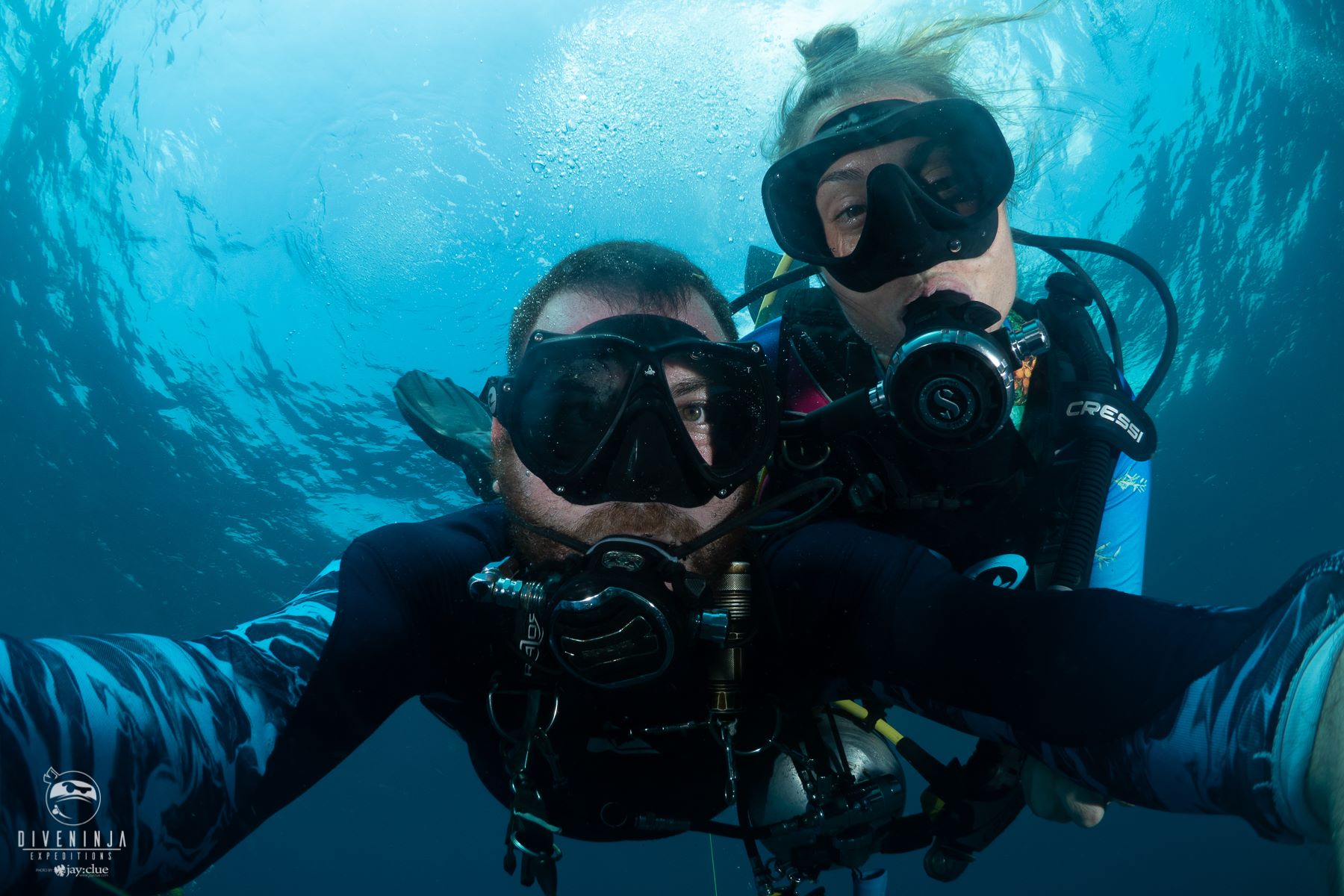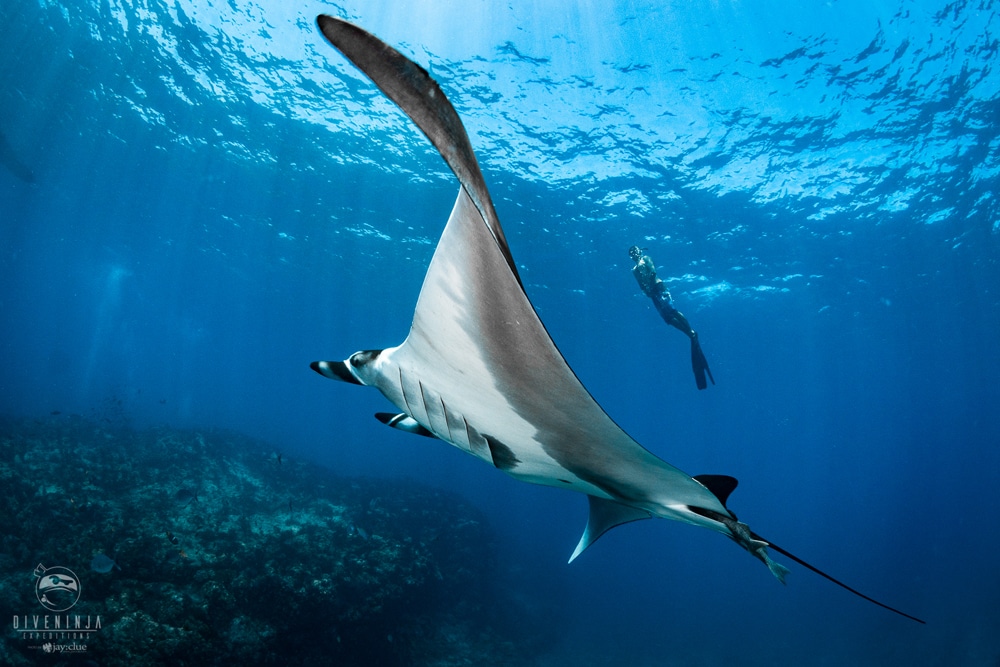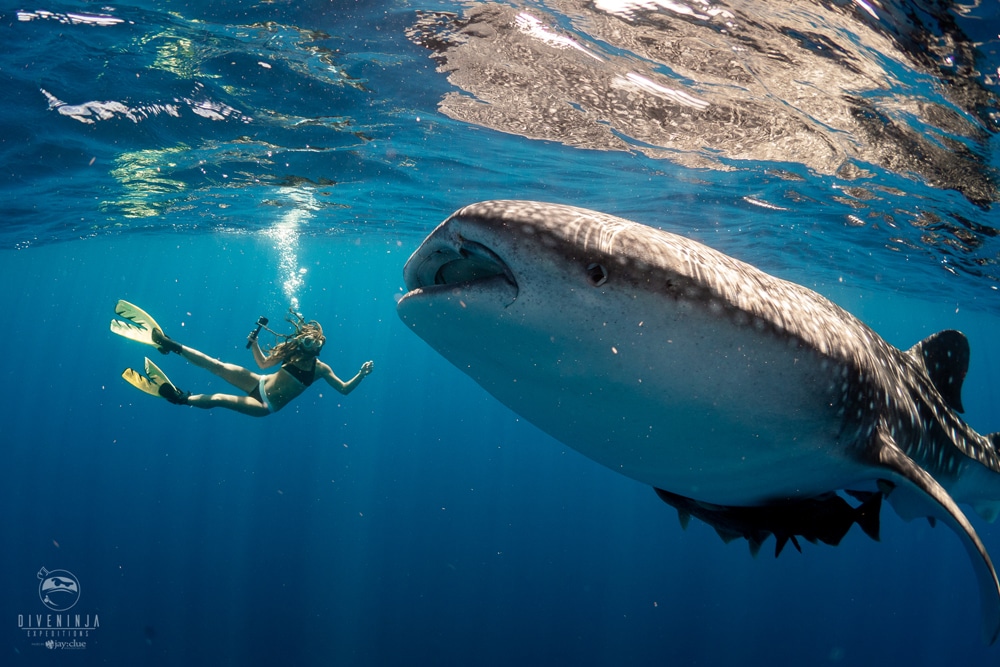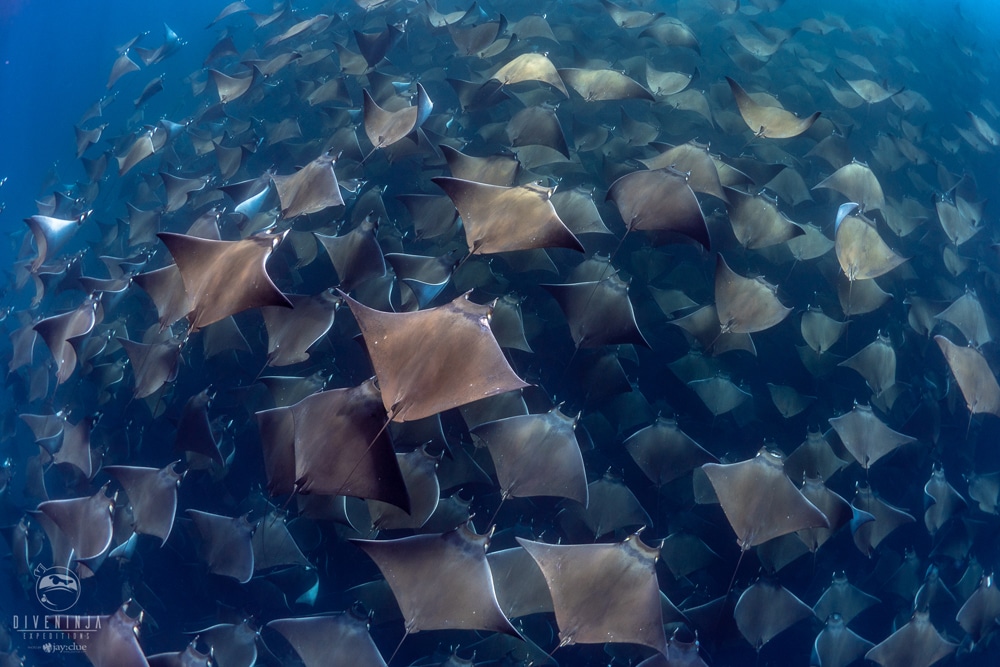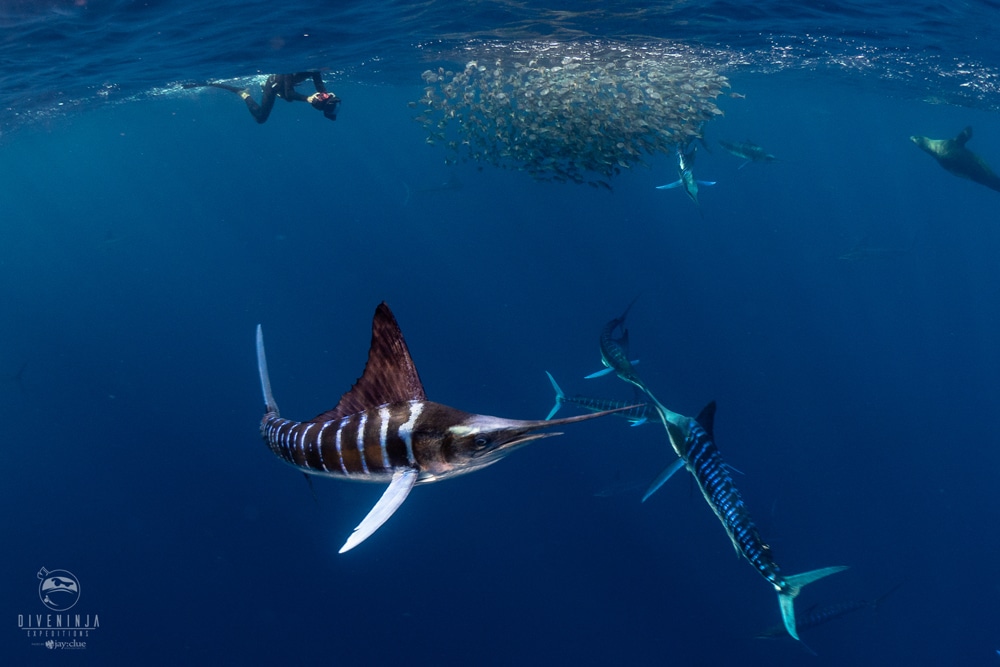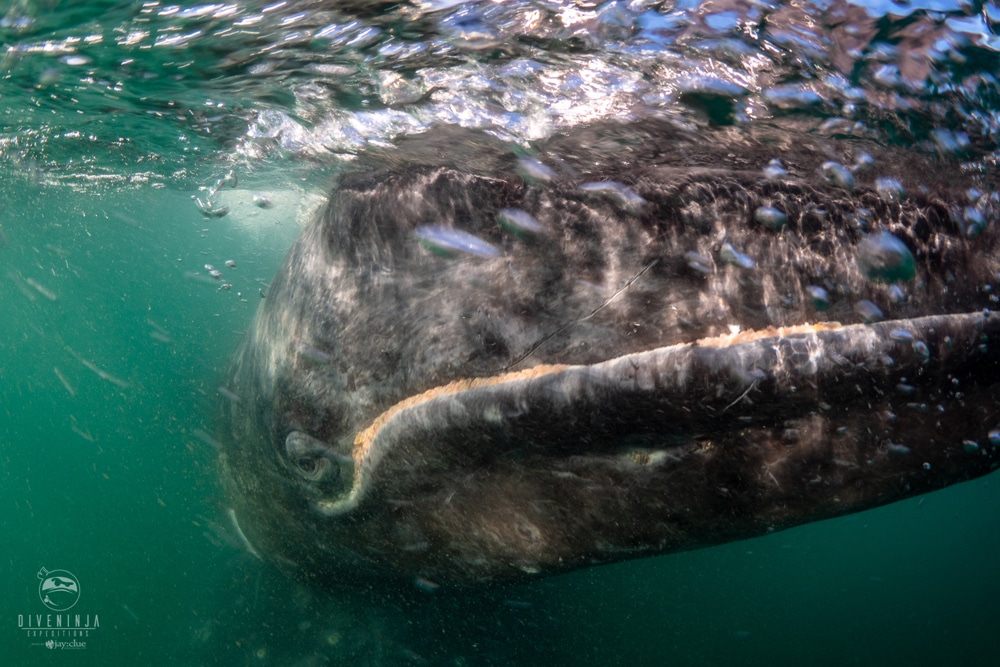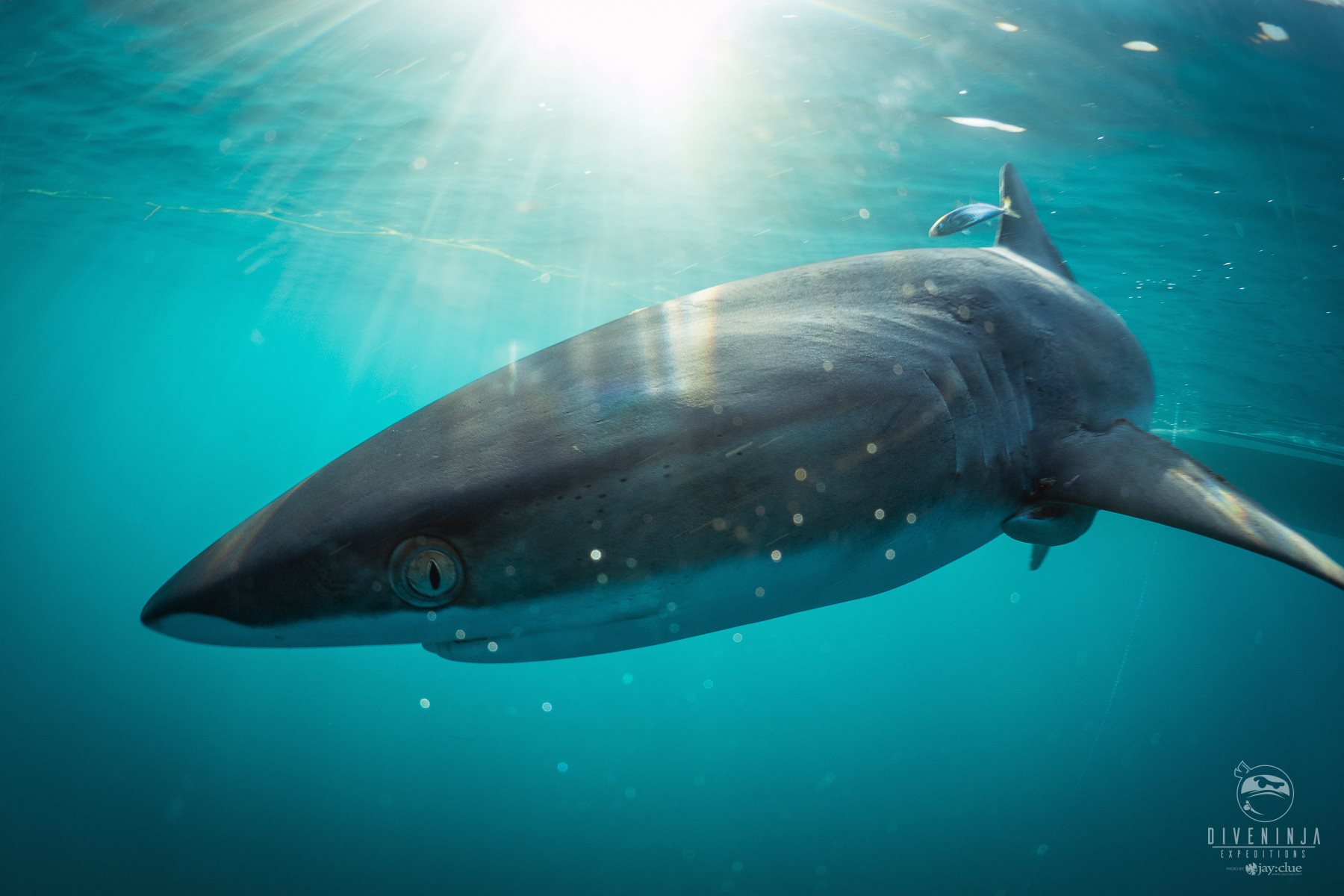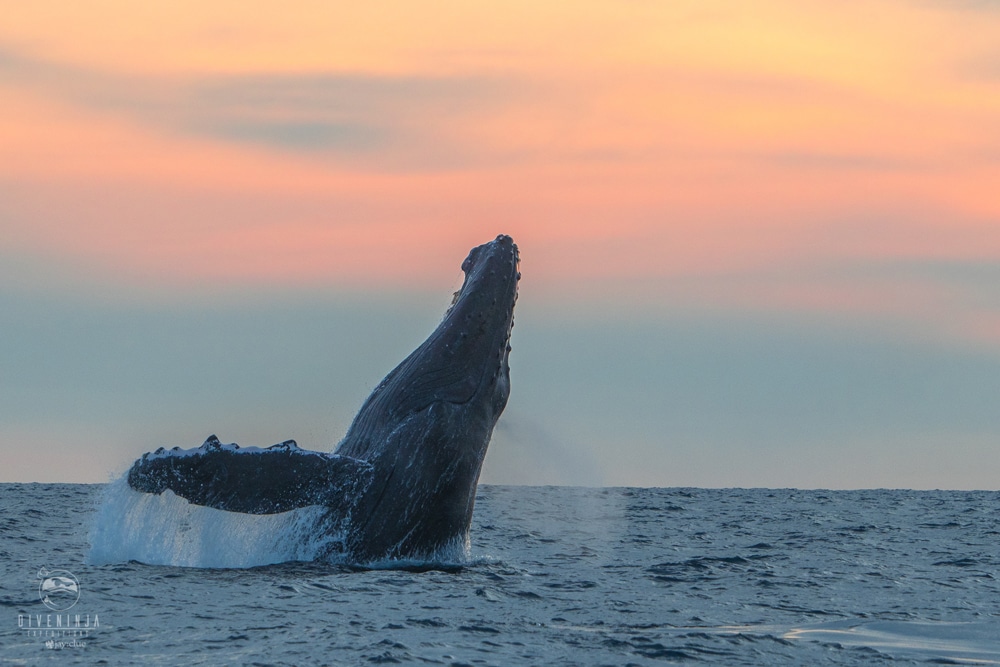News
Diving with… Jay Clue, Dive Ninja Expeditions, Cabo San Lucas, Mexico
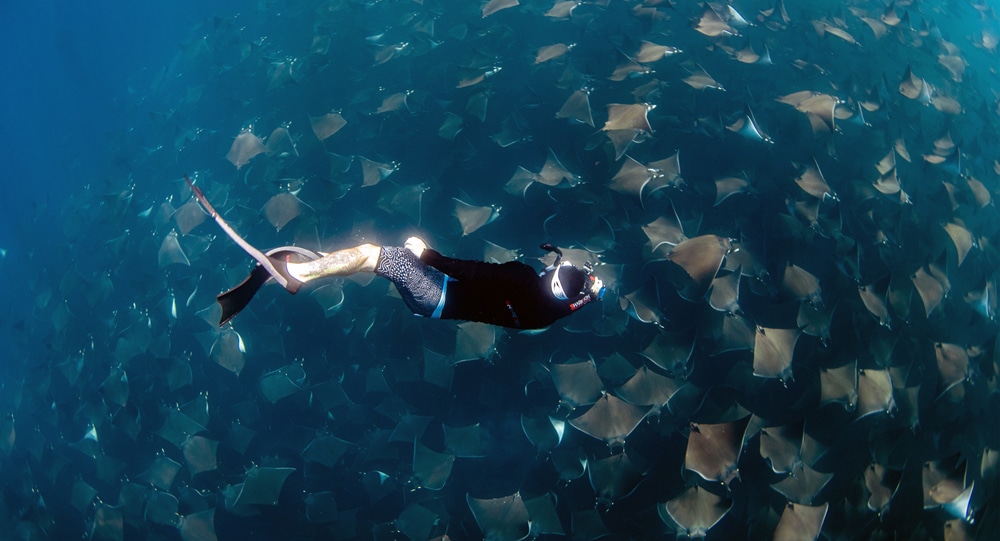
In this ongoing series, we speak to the people who run dive centres, resorts and liveaboards from around the world about their businesses and the diving they have to offer…
Jay Clue
What is the name of your business?
Dive Ninja Expeditions
What is your role within the business?
I juggle a few roles, but I guess that comes with running any business. Technically my job title is Founder/ Team leader, but my time is normally spent leading expeditions, teaching courses, or scouting & exploring new locations to bring our guests to.
How long has the business operated for?
We officially opened our doors in May 2017.
How long have you dived for, and what qualification are you?
I’ve been in diving for about a decade now and done around 6000+ dives at last estimate. I’m a Tec Trimix Instructor and Full Cave Diver, as well as a laundry list of other certifications & qualifications. I’m a bit of a big nerd (laughs).
What is your favorite type of diving?
I love diving with big animals, exploring new areas, and going for the more adventurous, off the grid, types of diving. The kind of dives that take you to obscure places in search of some type of special encounter that leaves you screaming through your regulator in excitement when it happens. That’s the kind of experiences I live for and what would become the basis for creating Dive Ninja Expeditions.
If you could tell people one thing about your business (or maybe more!) to make them want to visit you what would it be?
To start, Dive Ninja Expeditions takes a different approach to dive tourism. We focus on creating unique high-quality experiences and specialized tours & expeditions that aim to bridge the gap between tourism, marine science, and conservation. To give you an example, we’re really big on building citizen science trips with local marine biologists that allow our guests to not only learn about the local area but also contribute to actual research activities that play a vital part in helping to understand and protect our oceans.
We lead daily tours and multi-day expeditions all over Baja California Sur, Mexico from our Ninja HQ in Cabo San Lucas. Plus, throughout the year we also lead trips to different locations around the world to check out some of the best diving our planet has to offer. We also have an extensive list of courses and workshops on offer that span scuba diving, technical diving, freediving, photography and conservation.
One of the things we hear a lot from our guests is that diving with us feels like diving with old friends. I’d like to say this could be attributed to our high percentage of repeat guests, but it’s actually something we also hear a lot of from first time guests. I think it’s because we see our guests more like family instead of customers. One big Ninja Family that shares a passion for the ocean.
What is your favorite dive in your location and why?
It’s really hard to narrow down just one (laughs). Baja really has so much to offer throughout the year. But I think if I had to pick just one favorite it would be diving with the mobula rays. Every year starting in the late spring Munk’s Devil Rays begin to create gigantic schools around the coasts of Baja California Sur. The aggregations are one of the largest of any ray species in the world. It’s such an incredible experience. If you’ve seen BBC’s Blue Planet, you know what I’m talking out. They launch from the ocean splashing back into the sea. But not just 1 or 2…we’re talking hundreds.
It sounds like popcorn. But that’s only the appetizer, imagine ducking under the surface and swimming alongside thousands of these devil rays that have formed a school 20 meters high and are so densely packed together that it blocks the sunlight from reaching below them. Seeing them slowly soar through the ocean in unison is unlike anything on earth. It is truly breath-taking.
What types of diving are available in your location?
Cabo San Lucas and the Baja offer a pretty wide variety of diving that can accommodate everyone from beginners to seasoned experts, as well as great spots for freediving and technical diving too. We have relaxed shallow sites, steep sheer face walls, offshore sea mounts, marine parks, pinnacles, big schools of fish, sea lions, large pelagics, multiple species of sharks & whales, a bit of macro diving, and even a few wrecks. But I think what makes Baja so special is the unique expeditions to see the different migrations that happen throughout the year; such as the Mobula Ray aggregations, Striped Marlin hunting giant bait balls, as well as multiple shark & whale migrations throughout the year.
What do you find most rewarding about your current role?
I think most people would say I have a dream job. I get to spend my days in the water exploring, looking for new areas to dive and new incredible encounters to have. But for me, the most rewarding part is seeing the work we do inspire others to get involved in conservation. When our guests tell us how they ditched disposable plastics after diving with us, or started volunteering, or advocating for sharks in their hometown it makes my love for what we do grow even more.
I’d also have to say one of my favorite parts of the job is being able collaborate with & meet so many passionate scientists and conservationists. They are such an inspiration. Humans like Regi Domingo, David Valencia, Frida Lara, Marta Palacios, Sarah Richard, Pete Rodriguez Arana, Dr Robert Rubin, Mauricio Hoyas, and the list just goes on and on. These are incredible people doing remarkable things for our oceans. I truly feel blessed that we can partner with them. And it makes me feel great that as a business we can work with them to give back by helping to facilitate research and conservation projects that aid in protecting & understanding our oceans.
What is your favorite underwater creature?
I have always had this fascination with octopus. I find them incredibly interesting on so many levels. Whether it’s their amazing camouflage abilities, their intelligence & curiosity, or even just their almost alien looking appearance. I could honestly just spend entire dives hanging out with them.
Are there any exciting changes / developments coming up in the near future?
There is always a bunch of stuff brewing at the Ninja HQ! Right now, we are getting ready to release the dates for our 2020 Mobula Ray Expedition season. We’ve also been focused on launching our new conservation arm of the company — Dive Ninja Ocean Warriors. Plus, we are currently scouting a few new locations in Baja for some potential, new expeditions. I can’t say too much about them right now as it’s a ninja secret. But I will say that if it all comes together it could be a game changer for diving in Mexico and North America.
We’ve also got a super cool project coming up in French Polynesia for 2020 that we are working on with Girls That Scuba founder Sarah Richard, Nakawe Project founder Regina Domingo, and incredible photographer, Alex Kydd. We’ll be releasing the full details this August. I’m definitely excited for this one. There’s a bunch of other stuff too but I got to keep some of our ninja secrets for now!
As a center what is the biggest problem you face at the moment?
One of the big issues we are following right now is the spike in grey whale deaths this year. There’s been over 80 reported so far this season alone and no one really understands why. These curious giants are one of my favorite reasons for living in Baja. We share some of the most incredible up-close interactions with them here in the winter. So, it’s really sad and worries me that so many of them are dying on their migration back north.
We are also quite concerned about shark fishing in Baja, especially the fishing of protected or more vulnerable species such as the Mako. Organizations such as Nakawe Project are fighting hard for them and working with the local fishing communities to help change this, but there is still a long way to go. As a shop we are working on projects that aim to create alternative revenue streams for local fishermen through eco-tourism in hopes of showing them that sharks & rays are worth much more money alive.
Is your center involved in any environmental work?
Dive Ninjas is one of those rare centers that actually had environmental work as one of the core pillars in our business model from the start. We’ve built the company to be different than the average dive center and one of the ways we do this is by focusing our efforts on creating true eco-tourism platforms that aim to bridge the gap between tourism, science, and conservation. For example, the majority of our trips and expeditions include some form of citizen science and/or conservation aspects. We regularly invite marine biologists and researchers to be part of our expeditions to give presentations or create discussions, while also allowing the guests the chance to take part in actual research activities.
We’ve also worked with environmental consultants from the start to see how we can minimize our impact on the environment in all facets of the business. But it goes beyond this for us, our entire team is very passionate about the environment and our oceans. Every day we try to educate and inspire our guests to get involved and take action. It’s something we at Team Ninja are dedicated to and I wholeheartedly believe that we can ignite change from.
How do you see the SCUBA / Freediving / snorkeling industry overall? What changes would you make?
I feel there is a growing rift in the industry between the old and new ways of thinking in the industry that is starting to become a chasm. I don’t think it is going to change anytime soon, although I hope it does. But in the last few years we’ve seen this positive change in the industry and in the population in general. We see so many more people interested in science and protecting our oceans and planet. We see a big shift in what divers want too. They want something more than just paying for a quick jump in the water. They want experiences that have substance. They want to learn. They want to give back. And this is incredibly beautiful.
But on the other hand, I still hear stories from female students of how they were laughed at when they asked about wanting to try their hand at learning technical diving because they were ‘too small’ or ‘too weak’. Plus, we still see many tour operators blatantly raping our oceans for profit. I would love to see more in the industry truly working towards protecting our oceans and not just using it as a marketing campaign. And I’d love to see less of this archaic thinking towards females in the industry. So, I believe that if more and more newer shops like us try to set the bar a little higher then maybe others will be inspired to follow suit.
What would you say to our visitors to promote the diving you have to offer?
Baja is a land of contrasts. We have cactus filled deserts with barren rocky mountains reaching from star filled skies down to meet bright blue waters which are known to host more migratory marine species than anywhere else in the world. Cousteau nicknamed this region ‘the world’s aquarium’ because of the abundance and variety of life found here. It is a spectacular area where the mighty Pacific Ocean meets the beautiful Sea of Cortez. Yet much of the peninsula is untouched and just begging to be explored.
That’s where Dive Ninja Expeditions comes in. Whether it’s chasing huge bait balls & striped marlin 20 miles off shore or gliding along with thousands of mobula rays or just taking a relaxing wall dive in the Cabo San Lucas Marine Park our team can deliver the adventure you are looking for. And along the way we can teach you about the incredible animals and ecosystem that make Baja so special. Or even help you take an active part in giving something back to protect our oceans and further our understanding of them. Whether it’s to one of the more well-known areas or one of our secret ninja spots, we can show you a side of Baja that no other operator can. But best of all you can count on that it’s always done in a safe and conservation minded way.
Where can our visitors find out more about your business?
Check out our website to see all the trips, tours, expeditions and courses we have on offer. But I definitely recommend following us on Instagram & Facebook because that is where all the latest news and upcoming trips are released first.
Website: www.DiveNinjaExpeditions.com
Facebook: /DiveNinjas
Instagram: @DiveNinjas
To follow more of Jay Clue’s adventures follow him on Instagram, Facebook and shortly on www.scubaverse.com as a blogger!
News
Book Review: Fire on Monroe Bravo by Fred Lockwood

Fire on Monroe Bravo is the latest book in the Jack Collier series by Fred Lockwood. Our story begins with our lead characters, Jack and Sandro, owners of Marine Salvage & Investigation Company, arriving on the Monroe Bravo Oil & Gas Platform in the North Sea. Having secured a contract for their vessel the MV Stavanger to act as support ship to the platform for TransGlobal Oil, our protagonists are on a celebratory visit.
However almost as soon as they arrive a series of explosions rock the platform, causing huge damage, loss of life and the very real danger of a massive human, ecological and financial disaster.

As the danger mounts for both our heroes and the surviving workers, Jack and Sandro will have to escape the inferno, all while trying to save the platform and the men still trapped unable to help themselves.
The disaster sets the scene for the unfolding story lines following the fate of the platform and our main characters, the police investigation into a suspected terrorist act and the actions of TransGlobal Oil as they attempt to navigate the pubic outcry and financial repercussions.
In his eighth book, Fire on Monroe Bravo, Fred Lockwood delivers an explosive thriller, with plenty of above and in-water drama, and our heroes fighting for survival, what more can you ask for?
We thoroughly recommend this read and look forward to the next in the series. For more information about his book series, you can check out the reviews of his previous books here on Scubaverse.
- Title: Fire On Monroe Bravo
- Author: Fred Lockwood
- ISBN: 979-8325324536
Available in a paperback version and for Kindle from Amazon and book stores.
Blogs
Alonissos: The complete diving destination (Part 1)

In June we were incredibly fortunate to be invited to dive in Alonissos, a small Greek Island in the Sporades island chain located in the North Aegean Sea. While I have long been a big fan of the Greek Islands as a great holiday destination, I had not had the opportunity to do any diving on previous visits and Mike and I were extremely excited to see what Alonissos had to offer both above and below the surface!

The Sporades are easily accessible via the airport in Skiathos (the first island in the chain), which is served by Jet2 flights from all major UK airports from May through October. Numerous ferries and charter boats make island hopping from Skiathos Town a breeze. After an hour boat ride, the picturesque port of Patitiri was a wonderful introduction to Alonissos, where we were met by our gracious hosts Kostas of Albedo Travel and Dias of Alonissos Triton Dive Center. Mike and I were delighted to be staying at the Paradise Hotel, aptly named for its stunning views over the sea and great location for walking to the waterfront.

Alonissos is beautifully situated in the National Marine Park of Alonissos and the Northern Sporades, the largest marine protected area in Europe. The surrounding seas offer fabulous marine life, including incredibly rare species such as the Mediterranean monk seal. They boast deep walls covered in gorgonians and sponges, stunning topography with caverns, swimthroughs and pinnacles, and the first accessible ancient shipwreck from 500BC!

In locations where historical sites have been reported, the waters are largely restricted, but with collaboration between government, underwater archeologists and dive centres, incredible underwater museums are being created for a truly unique diving experience. Alonissos is home to the first of these, the Ancient Shipwreck of Peristera Accessible Underwater Archeological Site. The chance to dive into history (along with reports of healthy reef life and amazing underwater topography) meant Mike and I were keen to get in the water.

Our introduction to the diving around Alonissos was at the Agios Georgios Pinnacles, in the channel between Alonissos and Skopelos. This fantastic site was named “The Chimney,’ and proved to have a huge amount to see. We got to a decent depth here (over 25m), and marvelled at a colourful reef wall with a wonderful swim through whose rocky walls were absolutely covered with life. As well as brilliant topography there was no shortage of macro life here. We saw numerous nudibranchs, five different species in total. The second dive at Mourtias reef nearby was a shallower dive along a nice wall with lots of crevices. Several moray eels and grouper called this site home. We enjoyed looking in the crevices for lobster and smaller benthic life, such as cup corals and tunicates.

Our itinerary allowed us two dives a day with afternoons left to explore the island with our hire car and evenings to enjoy the famous Greek hospitality. This proved to be a lovely mix of in-water and land based diversions.

The next days diving to the Gorgonian Gardens and Triton’s Cave was to be even better! These two stunning sites are nothing short of fabulous. The Gorgonian Gardens was a deep wall near to the Agios Georgios islands. The ever-present currents in this deep channel meant that the sea life was amazing … the namesake Gorgonian sea fans dotted the wall at a depth of 30 to 50 meters, getting ever larger the deeper we went. Above 30m was by no means less beautiful, with sponges, corals, scorpionfish, moray eels and some rare and colourful nudibranchs.

The second shallower dive of the day was to Triton’s Cave or the Cavern of Skopelos, on the east side of that island. The spectacular rock formations had wild striations both above and below the water making a truly epic topography. The cavern entrance was at 14m, and big enough for a buddy pair, winding up to 6m and passing two beautiful windows out into the blue. Emerging from the cavern, the light at the shallower depths and the incredible rock formations made for a fantastic gentle swimming safety stop and we all surfaced by the boat with massive grins.

Check out our next blog :Alonissos: The complete diving destination (Part 2)” to hear about our amazing dive on the 2500 year old Peristera Wreck!
Thanks to:
Alonissos Triton Dive Center https://bestdivingingreece.com/
Albedo Travel https://alonissosholidays.com/activities/
Paradise Hotel https://paradise-hotel.gr/
Alonissos Municipality https://alonissos.gr/en/
-

 Blogs2 months ago
Blogs2 months agoDiving With… Nico, Ocean Earth Travels, Indonesia
-

 News1 month ago
News1 month agoMurex Bangka Announce New Oceanfront Cottages & Beachfront Dining
-

 Blogs2 months ago
Blogs2 months agoA new idea in freediving from RAID
-

 Marine Life & Conservation1 month ago
Marine Life & Conservation1 month agoIceland issue millionaire whale hunter a licence to murder 128 vulnerable fin whales
-

 Marine Life & Conservation2 months ago
Marine Life & Conservation2 months agoThe Shark Trust Great Shark Snapshot is back
-
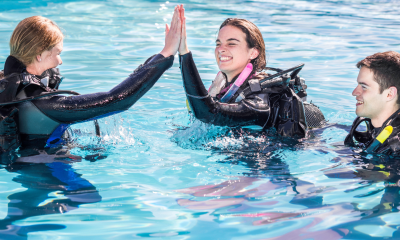
 News3 months ago
News3 months agoCharting New Waters; NovoScuba Goes Global with the Launch of their Revolutionary Dive Training Agency!
-

 Gear News1 month ago
Gear News1 month agoNew Suunto Ocean – a dive computer and GPS sports watch in one for adventures below and above the surface
-

 Marine Life & Conservation Blogs2 months ago
Marine Life & Conservation Blogs2 months agoBook Review: Plankton


